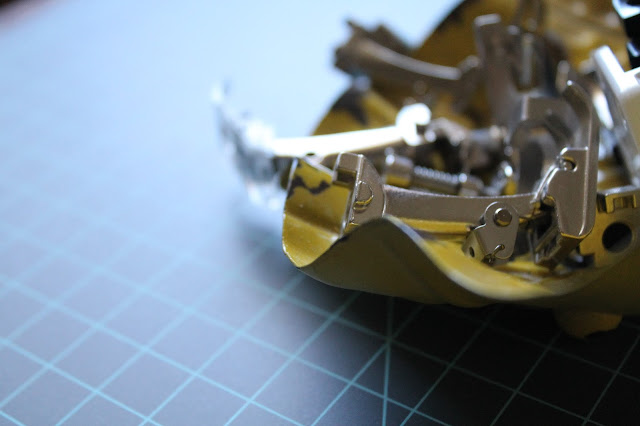recycle.your.clothes
Wondering what to do with your unworn, unwanted, outgrown, stained up, old, and out of style clothing? The average American throws away 68 pounds of clothing each each. Stop!! Take 2 steps away from the garbage bag and listen up- give me your garbage! 98% of clothes thrown into the landfills can be recycled, I’ll one up that though- because 100% can be upcycled or repurposed.
TrashN2Tees has partnered up with other eco-concious small business owners and a local collection facility to ensure that every article will be reused or recycled. I'm happy to announce that the TrashN2Cash program is celebrating is in its 2nd year of operation.
Wheel barrow it, over night freight it, reusable grocery bag it, or wrap it up in a pretty box and trade in your trash for cash… er… more like store credit.
Updated May 2012: To date TrashN2Tees has diverted nearly 2.5 tons of clothing from the landfill. TrashN2Tees Clothing Recycling program is now expanding to include local drop off and collections here in Central Kentucky. I will be working directly with the recycling center in Richmond, Kentucky and with The Department of Solid Waste in Franklin County. The clothing will be collected and processed for recycling.
All of the materials used in TrashN2Tees products are reclaimed. I hope that by rockin' recycled threads we can encourage and inspire others to consume less and recycle more.
The Clothing/Textile Recycling Process
Textile recyclers turn ripped, torn and otherwise unwearable clothing into other useful goods like rags, insulation and packaging and sound-proofing materials. Old shoes are used in composites for sidewalks and plastic furniture.
Updated May 2012: To date TrashN2Tees has diverted nearly 2.5 tons of clothing from the landfill. TrashN2Tees Clothing Recycling program is now expanding to include local drop off and collections here in Central Kentucky. I will be working directly with the recycling center in Richmond, Kentucky and with The Department of Solid Waste in Franklin County. The clothing will be collected and processed for recycling.
All of the materials used in TrashN2Tees products are reclaimed. I hope that by rockin' recycled threads we can encourage and inspire others to consume less and recycle more.
The Clothing/Textile Recycling Process
Textile recyclers turn ripped, torn and otherwise unwearable clothing into other useful goods like rags, insulation and packaging and sound-proofing materials. Old shoes are used in composites for sidewalks and plastic furniture.
More options for your unwanted clothing
- Find a USAgain Donation box near you
- Patagonia has a smart system for recycling their clothes or Polartec wear through Patagonia’s Common Threads Garment Recycling Program
- NYC residents looking to donate wearable clothes can contact WearableCollections.com, a service that puts still-good garments to good use
- Related: swap-O-rama, freecycle, clothingswap, pdxswap, u-exchange and swishing for keeping pre-loved clothing on our bodies rather than in landfills.
- Donate business attire to Dress For Success an organization that promotes independence of disadvantaged women by providing professional attire, a network of support and the career development tools to help women thrive in work and in life.
There are piles of reasons to recycle your used clothing, shoes, belts, handbags and stuffed animals. Not the least of which are the mountains of discarded garments that end up in America’s landfills each and every year. Clothing that can take hundreds of years to decompose. It’s an alarming situation that’s growing bigger and uglier every day.
The Bad News
As big a problem as landfills are they’re only part of the problem. When clothing isn’t recycled, it means more and more has to be produced and that means more and more pollution for all of us.
Take cotton. The production of cotton destroys farmland and pollutes waterways. In fact, 22.5% of all agricultural insecticides and 10% of all pesticides used each year go into cotton farming. It may be hard to believe, but the production of just one cotton t-shirt requires one-third of a pound of pesticides. Yikes!
What’s more, pesticides enter our ground water and streams affecting birds, bees, animals, the farm workers who have to work with them and eventually all of us.
Just as bad, the dyes, most of which contain heavy metals, are known to be harmful as well.
Think that’s all? It’s not.
Synthetic polyesters and nylon aren’t any better or safer. They’re made from petrochemicals, a byproduct of oil refining which increases our need and reliance on oil and increases harmful pollution which affects us all.
The Good News
You and your t-shirt can make a difference.
When you recycle, you conserve raw materials and natural resources. That means less has to be extracted, refined, transported and processed which lightens the load on Mother Earth. You also conserve the energy that’s needed in the manufacturing process. Less energy used means less needs to be generated, resulting in smaller carbon footprints and less greenhouse gases and emissions.
*statistics compiled from various sources: www.earth911.com, www.greenliving.com, and http://www.tranclo.com/



